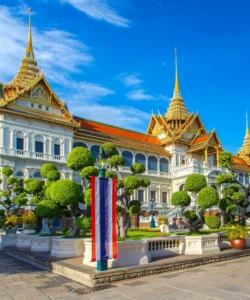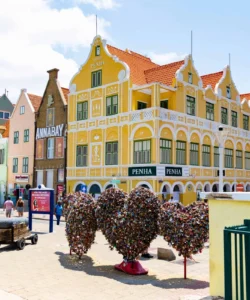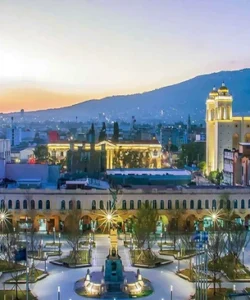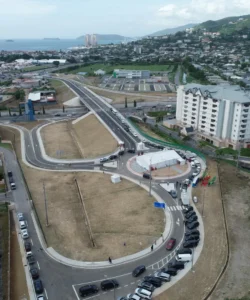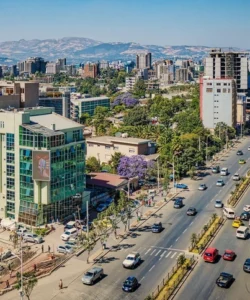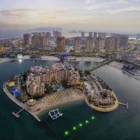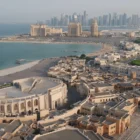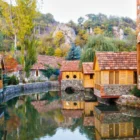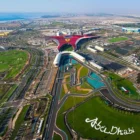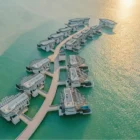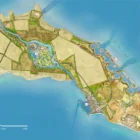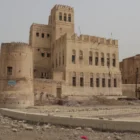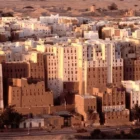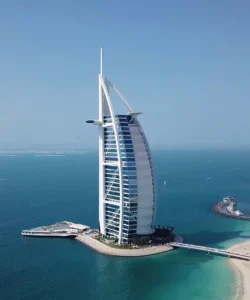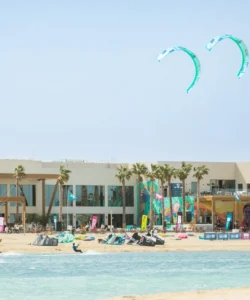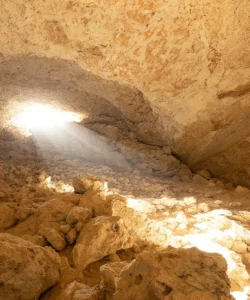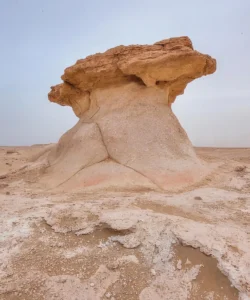Katara Cultural Village, often referred to simply as Katara, is a purpose-built development in Doha, Qatar, dedicated to celebrating and promoting global arts and heritage. Opened in 2010, its name is derived from “Catara,” the earliest known name for the Qatar Peninsula on historical maps. The village was designed to be a beacon of cultural exchange, offering a space where people from around the world can experience Qatar’s rich traditions alongside artistic expressions from other nations. It stands as a testament to Qatar’s vision of bridging cultures through art, knowledge, and entertainment.
Listen to an introduction about Katara Cultural Village
Name and Address
- Name: Katara Cultural Village (Arabic: الحي الثقافي كتارا).
- Address: Located on the eastern coast of Doha, nestled between the modern financial district of West Bay and the luxurious man-made island, The Pearl-Qatar.
How to Get There
Katara is a prominent and well-connected landmark in Doha, easily reachable by various means.
- By Metro: The most efficient way to travel is via the Doha Metro. The Katara station on the Red Line provides direct access to the village.
- By Car/Taxi: Taxis and popular ride-sharing services like Uber and Karwa offer convenient drop-offs at the main entrances. Ample parking, including underground lots and valet services, is available for those arriving by private car.
- Walking: For those staying in the nearby West Bay or The Pearl districts, Katara is accessible via a pleasant walk along the waterfront promenade, especially during the cooler months.
Landscape and Architecture
The design of Katara Cultural Village is a masterful blend of traditional Qatari architecture and grand, classical influences, creating a visually stunning environment.
- Architectural Style: The village is designed to resemble a traditional Qatari al fareej (a historical neighborhood). It features winding, shaded alleyways, courtyards, and buildings with sand-colored facades and flat roofs. This traditional aesthetic is juxtaposed with magnificent, large-scale structures.
- Key Structures:
- The Amphitheatre: A spectacular open-air venue that combines classical Greek design with traditional Islamic features. With a seating capacity of 5,000, it offers breathtaking views of the sea and hosts major concerts and events.
- Katara Mosque & The Golden Mosque: The village is home to two stunning mosques. The Katara Mosque, designed by Turkish architect Zeynep Fadıloğlu, is adorned with intricate Persian and Turkish tiles in shades of blue and gold. The smaller Golden Mosque is covered in gleaming gold tiles, representing the Ottoman architectural style.
- Pigeon Towers: A distinct and photogenic feature, these tall, traditional towers were historically used to house pigeons and collect their droppings for fertilizer. They are a beautiful example of regional Islamic architecture.
- Landscape: Katara is beautifully landscaped, featuring the lush, green Katara Hills with walking tracks and water features, offering panoramic views of the village and the sea. The 1.5 km long Katara Beach provides a pristine stretch of sand for relaxation and water sports.
What Makes It Famous
Katara’s fame comes from its role as a dynamic, all-encompassing cultural hub that offers a vast range of attractions and activities in one location.
- A Center for Arts and Performance: Katara is home to numerous art galleries, workshops, the Qatar Philharmonic Orchestra, and the Katara Opera House, the only venue of its kind in the country. It hosts a continuous calendar of events, from art exhibitions and film screenings to concerts and theatrical performances.
- Cultural Festivals: The village is renowned for its large-scale festivals, most notably the Traditional Dhow Festival, which celebrates the maritime heritage of Qatar and the Gulf region, and S’hail, an international hunting and falcons exhibition.
- Diverse Culinary Scene: Katara offers a wide array of dining options, from high-end restaurants serving cuisines from around the world (Lebanese, Turkish, Indian, Egyptian) to casual cafes and the popular “Tasty Street,” which features a variety of food cabins.
- Recreation and Leisure: Beyond the arts, visitors can enjoy the public beach, engage in water sports, explore the upscale outdoor shopping area 21 High St (Katara Plaza), or visit the Al Thuraya Planetarium for an educational journey through the cosmos.
- Educational Institutions: The village houses various cultural organizations, including the Arab Postal Stamp Museum and centers for youth hobbies and career development, solidifying its role as a place for learning and community engagement.
Differences from Other Historical Sites
Katara Cultural Village is distinct from traditional historical sites or other cultural centers in several fundamental ways:
- Purpose-Built, Not Organic: Unlike historical sites that evolved over centuries (like Souq Waqif’s original form), Katara is a modern, master-planned development created with the specific goal of being a cultural hub. It was built from the ground up in the 21st century.
- Global vs. Singular Focus: While a site like Saint Stepanos Monastery represents a specific religious and cultural heritage (Armenian), Katara’s mission is explicitly global. It is designed to showcase Qatari culture alongside and in dialogue with cultures from all over the world.
- Integration of Modern Luxury and Recreation: Katara seamlessly blends its cultural venues with high-end retail (Galeries Lafayette), luxurious dining, and modern recreational facilities like a climate-controlled high street and an opera house. This fusion of culture with modern leisure and luxury is a defining characteristic.
- A “Village” Concept: It is not just a single museum or performance hall but a sprawling, integrated complex designed to be explored like a village, with streets, plazas, hills, and a beachfront, offering a multi-faceted experience that can last for an entire day.
Katara Cultural Village Photos:































